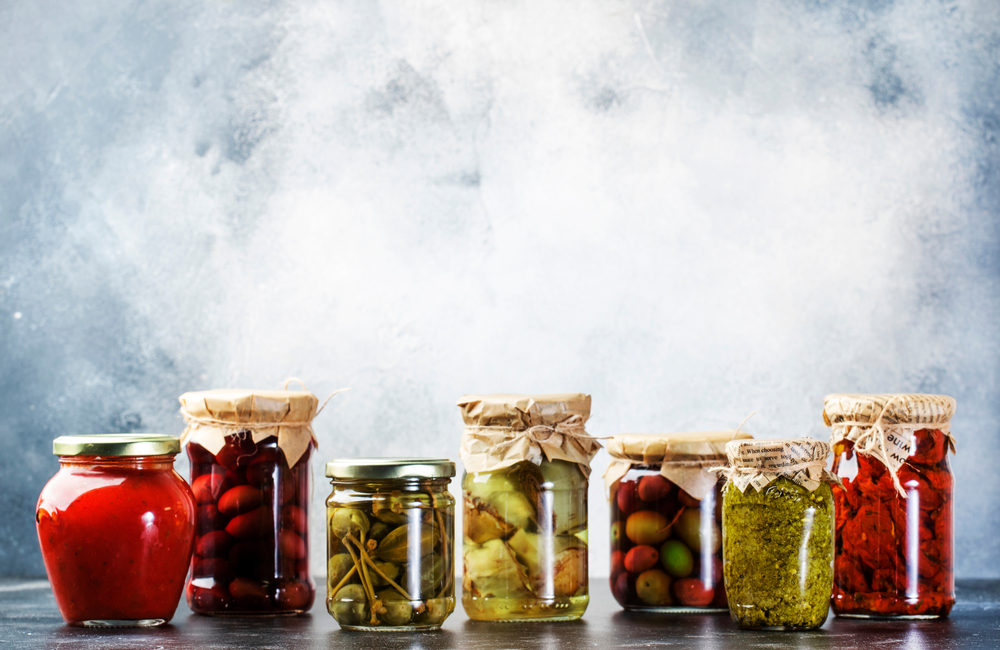
Canned Foods
Canned food are all those packaged preparations that undergo thermal treatments that destroy any micro-organism, deactivating enzymes.
The advantage of this kind of production is that the final product is perfect for the stockage in the shelf, where it can be placed there for long periods before being consumed. It is thus possible to counteract the perishability of food and have a food reserve always ready, thanks to a medium-long shelf life.
At the base of the canned food supply chain there is the chosen material, by which quality and freshness must be controlled to arrive at the table of the consumer-citizen in the best conditions as possible.
The food that can be treated and preserved under the form of preservation are different: fruit, jam, vegetables, legumes, and tomato paste which is the most common one.
The modality of most utilised preservation are: in oil, in vinegar, in brine or in sweet and sour, vacuum in glass jars or in milk.
Since the wide variety of preservation types, the productive process can be synthesized in the following phases:
- Cultivation of the food;
- Harvest of the food;
- Transformation of the food;
- Stabilization: the scope is to block the enzymes and micro-organisms’ activity which bring perishability of the food. To arrive at this result two processes are available: pasteurisation and sterilisation;
- Packaging, stockage: in sanitized containers, made of glass or metal.
According to the data of 2020, the sector is in incredible growth and, only in Italy, the total amount of income was 5,7 billion of euros. About the 60% of this turnover was due by the dale of tomato-based sauces. This supply chain comprehends also the production of juices.
The principal necessities of improvement come from the common goals of sustainable development and from the extensive checks carried out at each stage of production: this concern the sustainable protection of crops, the reduction of plant protection products in cultivated fields and traceability, in order to ensure the transparency of the products used by the consumer, from the field to the table.
Sustainable Soil and Crop Protection
With the Sustainable Soil and Crop Protection is promoted the usage of new sustainable technologies for the crop’s protection and the environment’s tutelage; with the scope of guaranteeing a better food safety and a smaller impact on the nature.
The fundamentals principle detectable in the adjectives ‘healthy, sustainable, and traceable...
Supply chains involved:
Plant-based Beverages Cereals Canned Foods Nuts Fruit and Vegetables WineryFood Safety and Quality
With the term ‘Food Safety’ it is intended a normative and sanitary ambit that comprehends a series of new practices and rules that have the purpose of ensuring the quality of the food product bought from a citizen-consumer. Indeed, under this optic the food product must be consumed in a healthy way, must be hygienic and risk...
Supply chains involved:
Cereals Canned Foods Nuts Fruit and Vegetables WineryProcess and Product Innovation
The shift to the Industry 4.0 is a moment of deep change and innovation capable to disrupt all the sectors.
The industry 4.0 is considered as a new Industrial Revolution that appears to be even more disruptive of the previous ones. It is seen as such because it is born from the convergence of the IT and OT technologies to create a digit...
Supply chains involved:
Plant-based Beverages Coffee Cereals Chocolate Canned Foods Beer Dairy Products Nuts Food Supplements and Nutraceuticals Milk Plant oils Fruit and Vegetables Pasta Meat Baking products Sweet products Rice Cold Cuts and Cured Meats Winery